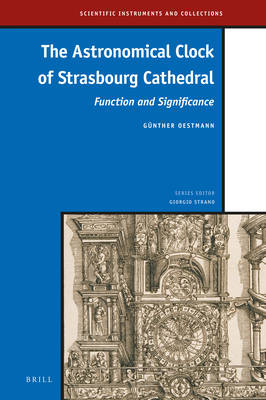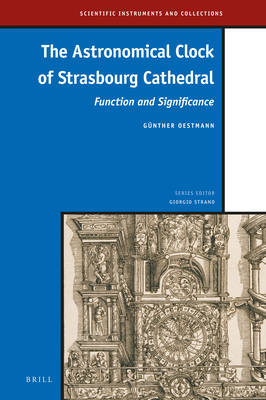
Je cadeautjes zeker op tijd in huis hebben voor de feestdagen? Kom langs in onze winkels en vind het perfecte geschenk!
- Afhalen na 1 uur in een winkel met voorraad
- Gratis thuislevering in België vanaf € 30
- Ruim aanbod met 7 miljoen producten
Je cadeautjes zeker op tijd in huis hebben voor de feestdagen? Kom langs in onze winkels en vind het perfecte geschenk!
- Afhalen na 1 uur in een winkel met voorraad
- Gratis thuislevering in België vanaf € 30
- Ruim aanbod met 7 miljoen producten
Zoeken
€ 281,45
+ 562 punten
Omschrijving
Strasbourg Cathedral's astronomical clock is one of the most famous monuments to Time in the world. No other clock has been described and appreciated so often and in such a myriad of ways. There were three clocks built consecutively within the cathedral: the earlier fourteenth century clock has left little trace; a second clock was realized in 1570-1574; while the nineteenth century clock began as a proposal for repairs, but was intended by its maker as a replacement clock. This book gives a detailed outline of the artistic and technical components of the second clock, much of which survives, and it describes the astronomical indications and its underlying conceptual framework. The author has discovered a hitherto disregarded contemporary statement that the clock displays four ways of determining the ascendant as described by Ptolemy. He also shows that the Strasbourg clock is the result of a highly original reception of the architectural theory of Vitruvius and other mathematical and mechanical texts of Late Antiquity.
Revised and updated translation from the German edition Die Straßburger Münsteruhr: Funktion und Bedeutung eines Kosmos-Modells des 16. Jahrhunderts. Published by GNT-Verlag in 1993.
See inside this book.
Revised and updated translation from the German edition Die Straßburger Münsteruhr: Funktion und Bedeutung eines Kosmos-Modells des 16. Jahrhunderts. Published by GNT-Verlag in 1993.
See inside this book.
Specificaties
Betrokkenen
- Auteur(s):
- Uitgeverij:
Inhoud
- Aantal bladzijden:
- 344
- Taal:
- Engels
- Reeks:
- Reeksnummer:
- nr. 8
Eigenschappen
- Productcode (EAN):
- 9789004423466
- Verschijningsdatum:
- 23/04/2020
- Uitvoering:
- Hardcover
- Formaat:
- Genaaid
- Afmetingen:
- 155 mm x 234 mm
- Gewicht:
- 657 g

Alleen bij Standaard Boekhandel
+ 562 punten op je klantenkaart van Standaard Boekhandel
Beoordelingen
We publiceren alleen reviews die voldoen aan de voorwaarden voor reviews. Bekijk onze voorwaarden voor reviews.









